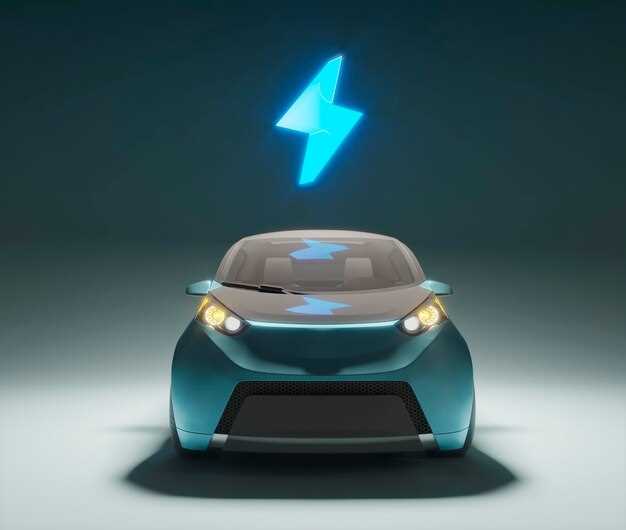Owning an electric supercar means stepping into the future of high-performance driving. These incredible machines showcase an unparalleled combination of speed, efficiency, and innovative technology that redefines what it means to drive a sports car. Models such as the Rimac C_Two and Tesla Roadster offer astonishing acceleration figures, with some reaching 0 to 60 mph in under two seconds.
Performance is not just about raw power; it’s equally about handling and control. Electric supercars utilize advanced battery placement that lowers the center of gravity, resulting in superior stability while navigating sharp turns. Additionally, torque is delivered instantaneously, providing a seamless connection between the driver and the vehicle. Take the Porsche Taycan, for instance, which balances speed with everyday usability, demonstrating practicality without compromising on thrill.
Charging infrastructures are expanding rapidly, making it easier than ever to integrate electric supercars into daily life. With more fast-charging stations popping up in key locations, drivers can efficiently recharge between races or weekend getaways. The transition to electric not only benefits performance but also contributes to a larger movement toward sustainability in the automotive industry.
Electric supercars are breaking all molds and setting new benchmarks for what enthusiasts can expect. With continual advancements in battery technology and performance engineering, you will witness a new era of driving that combines tradition with innovation, leaving gasoline-powered counterparts in the dust.
How Electric Powertrains Enhance Acceleration and Speed
Electric powertrains significantly boost acceleration and speed in high-performance driving. Instantly available torque allows these vehicles to achieve remarkable acceleration times, often surpassing traditional internal combustion engines.
Key advantages of electric powertrains include:
- Instant Torque Delivery: Electric motors provide maximum torque from zero RPM, ensuring rapid off-the-line acceleration.
- Lightweight Design: Battery technology has advanced significantly, enabling lighter weight vehicles without compromising power, enhancing speed and handling.
- All-Wheel Drive Capabilities: Many electric supercars utilize multiple motors for dynamic torque distribution, improving grip and stability during acceleration.
- Regenerative Braking: This technology recovers energy during braking and quickly redirects it to enhance acceleration, maintaining high performance throughout the drive.
For example, the Rimac C_Two boasts an astounding 0-60 mph time of just 1.85 seconds, showcasing the electric advantage. Similarly, the Tesla Model S Plaid promises swift acceleration with its tri-motor setup, making it a formidable contender on the racetrack.
Battery management systems optimize power delivery, ensuring that energy is utilized effectively during acceleration, enhancing both performance and sustainability. Charging infrastructure continues to improve, allowing drivers to enjoy unmatched performance without long downtimes.
Incorporating electric powertrains into supercars not only redefines performance but also sets new benchmarks in driving enjoyment, making the pursuit of speed more exhilarating than ever.
The Role of Lightweight Materials in Electric Supercar Performance
Lightweight materials significantly enhance the performance of electric supercars by improving acceleration, handling, and overall efficiency. Carbon fiber, aluminum alloys, and advanced composites contribute to reducing the vehicle’s weight while maintaining structural integrity and safety. This weight reduction allows for faster speeds and improved responsiveness on the road.
Carbon fiber stands out as a popular choice in supercar construction. It offers a high strength-to-weight ratio, making it ideal for components such as body panels, chassis, and internal structures. For instance, replacing traditional steel panels with carbon fiber can trim off substantial weight, leading to lower energy consumption and extended range between charges.
Aluminum alloys are another excellent option due to their lightweight characteristics and corrosion resistance. Many manufacturers utilize aluminum in frameworks and suspension components. The combination of aluminum’s lightweight properties and high stiffness enhances dynamic performance while ensuring reliability during high-speed maneuvers.
| Material | Weight Reduction (%) | Application |
|---|---|---|
| Carbon Fiber | 30-70 | Body Panels, Chassis |
| Aluminum Alloys | 20-40 | Framework, Suspension |
| Advanced Composites | 15-50 | Interior Components, Battery Enclosures |
Integrating lightweight materials also enhances the effectiveness of electric drivetrains. With lower mass, electric motors can deliver power more efficiently, resulting in quicker acceleration. Weight reduction helps maintain optimal battery performance and increases the vehicle’s range by minimizing energy loss during dynamic driving.
Innovations in material science continue to pave the way for even lighter and stronger options. By exploring these advancements, manufacturers can further push the limits of electric supercar performance, combining exhilarating speed with sustainability for the eco-conscious driver.
Comparing Battery Technology: Range versus Performance
Choose the right battery technology based on your driving priorities. For long-range driving, lithium-ion batteries reign supreme, offering impressive energy density. Vehicles like the Tesla Model S can deliver over 370 miles on a single charge, making them ideal for road trips.
If performance takes precedence, consider solid-state batteries. They provide quicker charging times and higher discharge rates, enhancing acceleration without sacrificing safety. For example, the Rimac C_Two showcases how this technology enables hypercars to accelerate from 0 to 60 mph in under 2 seconds.
Compare the energy density of different battery types, as it directly impacts both range and weight. Lithium-sulfur batteries, for instance, promise a higher capacity than traditional lithium-ion batteries, although they are still in development. As advancements continue, expect to see more vehicles harnessing this potential.
Pay attention to charging infrastructure, as it influences practical range. Supercharging stations enable rapid refueling for long-distance travel, while home charging offers convenience for daily use. Optimal planning allows drivers to leverage both aspects effectively.
Examine the balance between performance and range that manufacturers aim for in modern electric supercars. Car models like the Porsche Taycan provide an excellent compromise with their ability to deliver thrilling acceleration and a respectable range of around 250 miles.
Case studies highlight how automakers prioritize one aspect over the other. Some prioritize range, resulting in heavier vehicles, while others focus on performance at the expense of range. Analyze your driving habits to determine which features align best with your lifestyle.
Investing in battery technology continues to evolve, influencing the future of electric supercars. Stay informed about developments, as they will shape new models, ultimately enhancing your driving experience.
Innovative Aerodynamics in Electric Supercar Design
Electric supercars utilize advanced aerodynamic designs to enhance efficiency and performance. Designers implement active aerodynamics, such as adjustable front wings and rear spoilers, which adapt to driving conditions. This technology optimizes downforce at high speeds while minimizing drag during lower speeds.
Computational Fluid Dynamics (CFD) plays a pivotal role in shaping these vehicles. Engineers simulate airflow around various shapes, refining designs before physical prototypes are built. This method accelerates the development process and ensures precision in airflow management.
Many electric supercars feature closed wheel designs to reduce air resistance. This design choice not only minimizes drag but also allows for a seamless flow of air across the vehicle’s body. Reduced turbulence translates into better stability and handling during high-speed maneuvers.
Manufacturers incorporate lightweight materials such as carbon fiber and aluminum, which help achieve an optimal power-to-weight ratio. These materials also contribute to better aerodynamic efficiency, allowing electric supercars to maintain impressive performance without excessive weight.
Innovative cooling systems, designed to enhance battery performance, often incorporate aerodynamic elements. Ventilation ducts strategically positioned to channel airflow also assist in keeping components at ideal temperatures, ensuring longevity and reliability during intense driving scenarios.
A streamlined silhouette is another common feature in electric supercar design. The shape reduces drag while enhancing aesthetics, making these vehicles visually striking and functional. Iconic models have demonstrated that beauty and performance can coexist seamlessly.
Ultimately, electric supercars push the boundaries of aerodynamic technology. Continuous investment in research and development ensures these vehicles remain at the forefront of performance driving, making every design decision count. By embracing these innovative approaches, manufacturers are redefining what high performance means in the electric age.
Charging Infrastructure: What Owners Need to Know
Invest in a home charging station. A Level 2 charger can fully charge most supercars overnight, providing convenience and saving time. Look for reputable brands and consider installation costs and requirements.
Utilize public charging options. Familiarize yourself with the locations and availability of fast chargers in your area. Apps like PlugShare or ChargePoint help locate nearby stations and provide real-time updates on availability.
Check the charging speed. Fast chargers typically deliver 50 kW or more, significantly reducing charging time compared to standard 3 kW outlets. Knowing your car’s charging capacity can help you choose the right stations.
Stay updated on charging network expansions. Many manufacturers partner with networks to enhance infrastructure. Manufacturers often offer incentives for owners, like free charging credits or discounts for specific networks.
Understand payment systems. Some chargers require specific apps or memberships while others accept credit cards directly. Familiarize yourself with how each station operates to avoid surprises during a trip.
Monitor charging costs. Prices can vary between networks and locations. It can be more economical to charge at particular times, so check for off-peak rates or memberships that provide discounts.
Consider range capabilities when planning long trips. Most electric supercars have impressive ranges, but having a solid charging plan will ease anxiety. Map your journey and identify charging points along the way.
Keep your charging equipment maintained. Inspect cables and connectors regularly to ensure they are in good condition. Proper maintenance prevents issues and ensures optimal charging performance.
The Future of Electric Supercars: Trends and Predictions
Expect hyper-fast charging capabilities to become standard, allowing drivers to replenish battery power in just minutes. Innovations in battery technology, such as solid-state batteries, promise to enhance energy density and reduce weight, leading to better performance and longer ranges.
A growing focus on sustainability will drive manufacturers to adopt eco-friendly materials in production. Recycled and bio-based composites will likely become prevalent, appealing to environmentally-conscious consumers without compromising style or performance.
Autonomous driving features will start integrating into high-performance models, providing drivers with advanced safety systems while enhancing the thrill of driving on tracks. Expect features that allow for driver override, making it possible to choose when to engage autonomous capabilities.
Software updates will play a key role in enhancing vehicle performance and functionality. Regular over-the-air updates will allow manufacturers to fine-tune systems, add features, and optimize power management based on driving behavior.
Smart connectivity will become standard, enabling vehicles to communicate with each other and infrastructure. This interconnectivity will enhance safety measures and introduce features like traffic prediction, lane assistance, and automated parking.
Performance benchmarks will shift, emphasizing acceleration and handling over raw speed. With advancements in torque vectoring and adaptive suspension systems, expect electric supercars to deliver impeccable handling dynamics while retaining rapid acceleration.
Collaboration between automakers and tech companies will shape the future, facilitating the integration of cutting-edge technology into electric supercars. Such partnerships will drive user experience enhancements, focusing on infotainment and real-time data analytics.
As battery recycling technologies advance, the automotive industry will see a reduction in waste and an improved lifecycle for electric vehicle components. Manufacturers will embrace closed-loop systems, promoting sustainability throughout the production cycle.
In the coming years, the market will likely see a rise in niche electric supercar manufacturers. Smaller brands will bring unique designs and specialized performance traits, catering to enthusiasts looking for exclusivity.
Expect significant competition pushing performance parameters higher. Established supercar brands will vie for dominance alongside new entrants, leading to rapid technological advancements and possibly lowering prices in the high-performance segment.







